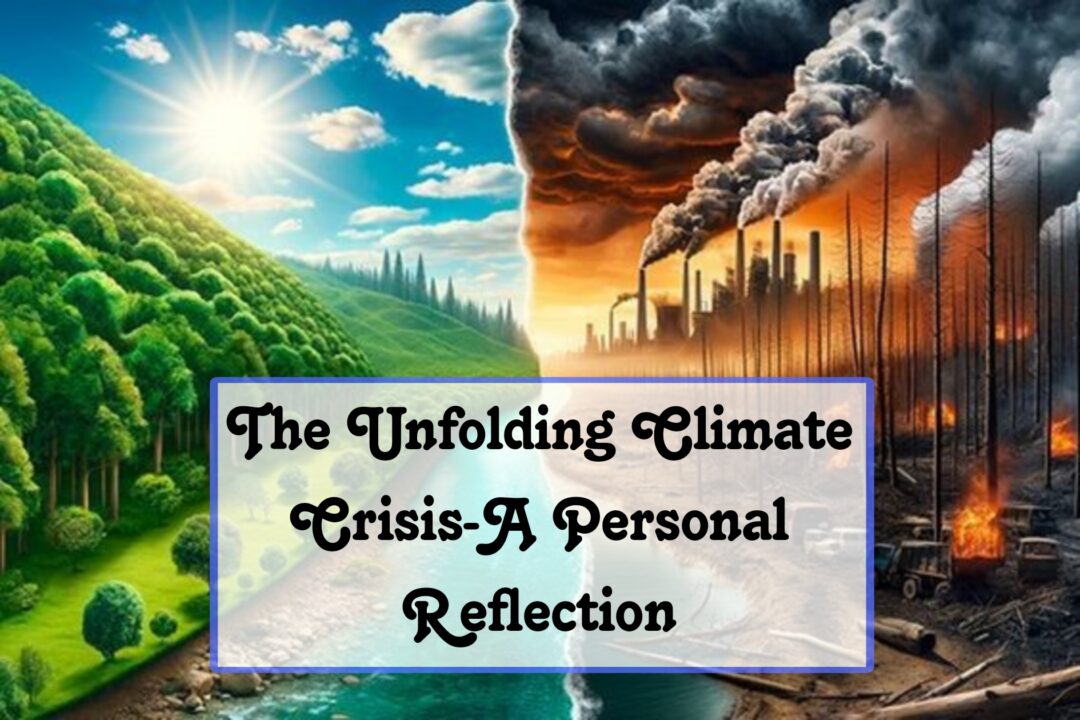About three to four years ago, I began writing about climate change and how global warming affects human life and other forms of life. At that time, many people around me considered it a philosophical subject, not grounded in immediate reality. In fact, most were not in a position to accept or acknowledge its significance. We humans are often engrossed in our lives and driven by greed. As a result, changes occur both directly and indirectly that impact us profoundly. The problem lies in our transition from being part of the animal kingdom to establishing a human kingdom, one that claims superiority. In doing so, we forgot that nature maintained the ecosystem and its balance. Gradually, with the growth of technology and globalization, everything in nature began to fall apart.

Many African countries have already become victims of rising temperatures. These nations, home to some of the world’s poorest populations, are not the primary contributors to climate change, yet they suffer disproportionately. For instance: South Sudan experienced temperatures soaring to 45°C, prompting the government to close schools for the first time due to a heatwave. In West Africa, a severe heatwave in February 2024 led to temperatures peaking above 40°C, with a heat index reaching 50°C. This extreme heat weakened cocoa trees in Ivory Coast and Ghana, leading to reduced processing and skyrocketing cocoa prices.
The Sahel region, including Mali and Burkina Faso, faced a deadly heatwave in April 2024. In Mali’s capital, Bamako, over 100 deaths were reported between April 1 and 4, compared to 130 deaths for the entire month of March. Countries like Lesotho, Malawi, Namibia, Zambia, and Zimbabwe declared hunger crises as national disasters due to severe droughts, pushing millions into hunger. Tunisia experienced a record temperature of 49.0°C, while Agadir, Morocco, reached 50.4°C in 2023 . In March 2024, a severe heatwave scorched East Africa, forcing school closures in South Sudan for two weeks . West Africa, including countries like Nigeria, Benin, and Ghana, faced extreme heatwaves in 2024, exacerbated b climate change .Despite contributing minimally to global emissions, these nations face the harshest consequences of climate change. Due to global warming, countries like Sudan have started relocating people. Millions have been displaced by temperature changes. While COVID-19 death tolls were meticulously recorded, deaths caused by global warming often go uncounted.

Rich countries are primarily responsible for climate change, yet the rest of the world suffers. Consider the changes after the first 100 days of Donald Trump’s administration in the U.S. Reports indicate that his policies have had significant impacts on the climate:
Wind Energy Projects Halted: On his first day in office, President Trump issued a memorandum halting federal approvals for wind energy projects. This move threatens billions in investments and undermines efforts to reduce pollution.
Disaster Preparedness Cuts: Extensive budget cuts and layoffs in disaster management agencies like FEMA and NOAA have compromised the nation’s ability to prepare for and respond to natural disasters.
Clean Energy Job Losses: Federal funding cuts to clean energy programs have disrupted the career paths of many young professionals, leading to over a 20% drop in renewable power job postings.

These policy shifts not only affect American citizens but have global repercussions, hindering collective efforts to combat climate change. Environmental changes are affecting everyone, threatening to empty our wallets, with only the very rich able to sustain themselves. The economic impact is immense. Labor collapse is also a significant concern. From 2001 to 2020, extreme heat wiped out 250 billion working hours of labor. This drastic reduction in outdoor working activities hampers economic growth. Nowadays, living without air conditioning has become tedious. Whether you’re rich, middle class, or poor, a good cooler is almost a necessity. This not only increases personal expenses but also contributes to higher energy consumption, further exacerbating global warming.
The most affected part of our lives is the food sector, leadingto a substantial hit on the economy. Crop failures due to extreme heat are becoming increasingly common:
Wheat Production: By 2022, wheat production had significantly reduced by 20% due to heatwaves in its native areas. Now, in 2025, further reductions are expected.
Milk Production: Rising temperatures have led to a decline in milk production by 20-30% in regions like Mysuru and Chamarajanagar.
Vegetables and Fruits: Increasing temperatures devastate vegetable and fruit production, leading to food inflation and increased financial stress for the poor.
In 2024, U.S. farmers faced $11 billion in crop losses due to droughts, heatwaves, and wildfires, leading to food supply disruptions and price hikes . Heat stress has significantly reduced milk production. In India, rising temperatures threaten to reduce milk production by 25% by 2085, affecting the livelihoods of millions of small holder dairy farmers . These challenges threaten food security across the country, with the death toll due to starvation or malnutrition expected to spike among poor populations.

Heatwaves have forced many schools to close. Last year, around 40,000 heatstroke cases were reported in India. This surge in illnesses leads to increased hospital expenditures. Additionally, water reserves dropped to 30-40% last year, posing threats to irrigation and drinking water access, further increasing mortality rates.
By 2030, it’s projected that 34 million people will lose their jobs solely due to heatwaves. Daily wage workers will be the most affected, facing the brunt of this crisis. The climate crisis is no longer a distant threat; it’s a presen reality affecting every facet of our lives. From health and food security to economic stability and employment, the impacts are profound and far-reaching. It’s imperative that we acknowledge these challenges and work collectively towards sustainable solutions to safeguard our future.
